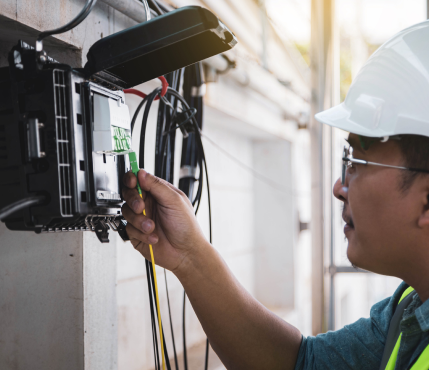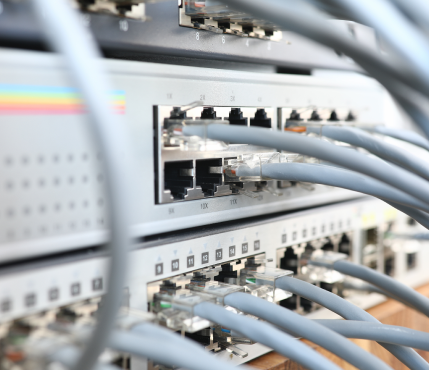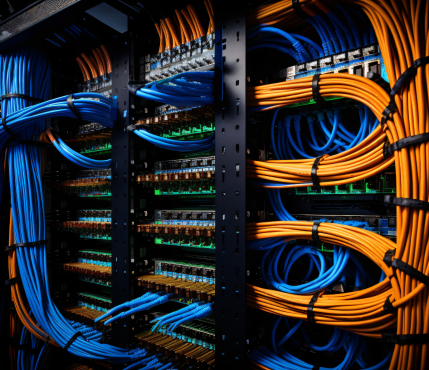
Opus broadband provide services using own fibre optic network which currently deployed across North West of England. This network allows us to deliver superfast broadband to our customers utilising our innovative fixed wireless technology, customers can benefit from speeds of either 100Mbps or 300Mbps depending on location. Opus Broadbands fixed wireless technology uses wireless signals to connect to your properties instead of legacy copper cables, Opus Broadband customers benefit from full contract speeds rather than slower speeds because of old or long copper cables in the ground.
If a property cannot be connected to our own network eg. our Broadband network is not yet live in the town where your property is located. We can still deliver fast broadband services through the Openreach network with a maximum speed of 80Mbps. (Actual services speeds will be limited to what is available at address.)
This does not stop customers benefiting from the other billing and service benefits that working with Opus Broadband brings.

Opus broadband have our own fibre optic network currently deployed across various locations across North West of England. This network allows us to deliver ultrafast broadband access to our customers utilising our GPON fibre to the premise (FTTP) technology. Customers who can have GPON fibre to the premise (FTTP) connections from the Opus Broadband network will benefit from speeds of up to 900Mbps. Opus Broadbands GPON fibre to the premise (FTTP) technology uses a fibre connection to deliver ultrafast broadband to your properties instead of legacy copper cables, this allows Opus Broadbands customers to benefit from full contract speeds rather than reduced speeds because of old or long copper runs in the ground.
If a property cannot be connected to our own network for example the property is in a town Opus Broadband is not yet live in, then we can still deliver ultrafast broadband through the Openreach network if available, however costs for these services tend to be higher than Opus Broadbands own service.

Commercial landlords have mixed-use property portfolios, from individual business units to small industrial estates and even business parks, MDU’s (multiple dwelling units) like blocks of flats or sheltered or residential housing. Whilst FTTP is suitable for many businesses and employees working from home it is not suitable for commercial properties. For any commercial property, a Dedicated Internet Access (DIA) connection is the best broadband connection and delivers many benefits to users as well as landlords.
- Broadband connection speed from 100Mbps to 1Gbps
- Dedicated internet connection, similar to a conventional leased line.
- Synchronous connection, download and upload speeds are the same a 1Gbps connection has 1Gbps download and upload speed, unlike an asynchronous FTTP connection.
- Priority network support from the Opus Broadband network engineering team.
- Enterprise routers as standard
- Broadband connections upto 1Gbps can be delivered to each business premises
- Flexible broadband capacity for different business types
- Dedicated network support.
- Simple billing for broadband connections to commercial properties regardless of capacity.
- Scaleability for future developments
- Better Broadband connections than normally available for small businesses upto 1Gbps
- No waiting for broadband installation
- For manufacturing and larger businesses
- Dedicated network support.
- Easy billing for broadband connection regardless of capacity.

Having a great broadband connection is only half the battle, there is no point having a superfast broadband connection into a property if the Wi-Fi coverage is weak or very poor and only allows one tenant to access the full speed of the broadband connection.
Our Hardwired MESH Wi-Fi add-on helps landlords deliver Wi-Fi throughout their property. Our engineers survey the property and plan where Wi-Fi routers need to be installed. This could be as simple as installing a router in each room of an HOM (house of multiple occupancy) or more complex in larger properties on multiple levels.
Our engineers only use the latest generation of Wi-Fi 6 routers to provide the best possible broadband speed to devices on your network. If devices do not have Wi-Fi 6 capability they will not be able to connect to the network at the full speed delivered to the router.

For commercial properties, a Mesh Router wi-fi system is not suitable instead an Enterprise Level Wi-Fi and a LAN (local area network) is normally needed to provide local access to the internet.
An Enterprise level Wi-Fi network is made from individual Wi-Fi access points connected to a dedicated wireless controller. By using the latest Wi-Fi 6 routers an enterprise level Wi-Fi network can scale to support 1000’s of individual users over multiple buildings on a commercial site.
Communal Wi-Fi / public Wi-Fi where user details need to be entered before access to the internet is granted.
Properties:- Hotels
- Conferencing
- Leisure
- Arenas
Using wireless controllers changes and can be implemented quickly and easily across the entire Wi-Fi network.
Properties:- Manufacturing Business
- Business Centres
- Arenas
Enterprise networks are built to expand, unlike domestic Wi-Fi routers Enterprise routers and wireless controllers can be updated very quickly
Properties:- Manufacturing
- Business Centres
- Business Parks
- Arenas
Being able to analyse dataflows and usage means systems can be supported through variable demand.
Properties:- Hotels/conferencing
- Manufacturing
- Business Centres
- Business parks
- Arenas

Even residential properties tend to have a combined local area network (LAN) and a Wi-Fi network.
Landlords with commercial residential properties (MDU’s) may have a local area connection to the internet that is distributed in each unit using Wi-Fi.
The difference between a residential installation and an installation for a commercial landlord is flexibility, a residential installation is normally fixed for relatively long periods, where as commercial properties has to change with the requirements of each tenant.
Planning network usage and development is critical to ensuring systems can be maintained and updated as developments in network technology become commercially available


Commercial local area network cabling, is normally category 5 (or Cat 5, 5e or 6).
It can transmit video and telephony signals in addition to standard computer data. The cat 5 is usually the bare minimum required for VoIP, whilst Giga speed networks require top-grade cat 6 network cabling.
